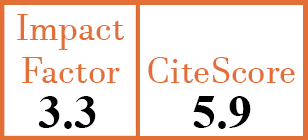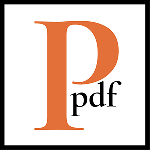Full Papers
Increased visfatin levels are associated with higher disease activity in anti-Jo-1-positive myositis patients
H. Hulejová1, O. Kryštůfková2, H. Mann3, M. Klein4, K. Pavlíčková5, J. Zámečník6, J. Vencovský7, L. Šenolt8
- Institute of Rheumatology, Prague, Czech Republic. hulejova@revma.cz
- Institute of Rheumatology; and Department of Rheumatology, First Faculty of Medicine, Charles University, Prague, Czech Republic.
- Institute of Rheumatology; and Department of Rheumatology, First Faculty of Medicine, Charles University, Prague, Czech Republic.
- Institute of Rheumatology; and Department of Rheumatology, First Faculty of Medicine, Charles University, Prague, Czech Republic.
- Second Faculty of Medicine and University Hospital Motol, Department of Pathology and Molecular Medicine, Charles University in Prague, Czech Republic.
- Second Faculty of Medicine and University Hospital Motol, Department of Pathology and Molecular Medicine, Charles University in Prague, Czech Republic.
- Institute of Rheumatology; and Department of Rheumatology, First Faculty of Medicine, Charles University, Prague, Czech Republic.
- Institute of Rheumatology; and Department of Rheumatology, First Faculty of Medicine, Charles University, Prague, Czech Republic.
CER8683
2016 Vol.34, N°2
PI 0222, PF 0229
Full Papers
Free to view
(click on article PDF icon to read the article)
PMID: 26886056 [PubMed]
Received: 11/06/2015
Accepted : 07/10/2015
In Press: 09/02/2016
Published: 13/04/2016
Abstract
OBJECTIVES:
The aim of this study was to evaluate serum levels of visfatin in anti-Jo-1-positive myositis patients, its expression in muscle tissue and to investigate potential relationships between visfatin, B-cell activating factor of the TNF family (BAFF), disease activity and anti-Jo-1 autoantibody levels.
METHODS:
Serum levels of visfatin and BAFF were measured in 38 anti-Jo-1 positive myositis patients and 35 healthy subjects. Disease activity was evaluated by myositis disease activity assessment tool (MYOACT) using visual analogue scales (VAS) and by serum muscle enzymes. Visfatin expression was evaluated by immunohistochemistry in muscle tissue of myositis patients (n=10) and compared with non-inflammatory control muscle tissue samples from patients with myasthenia gravis (n=5).
RESULTS:
Serum visfatin and BAFF levels were significantly higher in myositis patients compared to healthy subjects and were associated with clinical muscle activity assessed by VAS. Only serum BAFF levels, but not visfatin levels, positively correlated with muscle enzyme concentrations and anti-Jo1 antibody levels. There was a positive correlation between visfatin and BAFF serum levels in myositis patients but a negative correlation was observed in healthy subjects. Visfatin expression was up-regulated in endomysial and perimysial inflammatory infiltrates of muscle tissue from myositis patients.
CONCLUSIONS:
Up-regulation of visfatin in myositis muscle tissue and an association between increased visfatin levels and muscle disease activity evaluated by MYOACT in anti-Jo-1 positive myositis patients could support possible role of visfatin in the pathogenesis of myositis.


